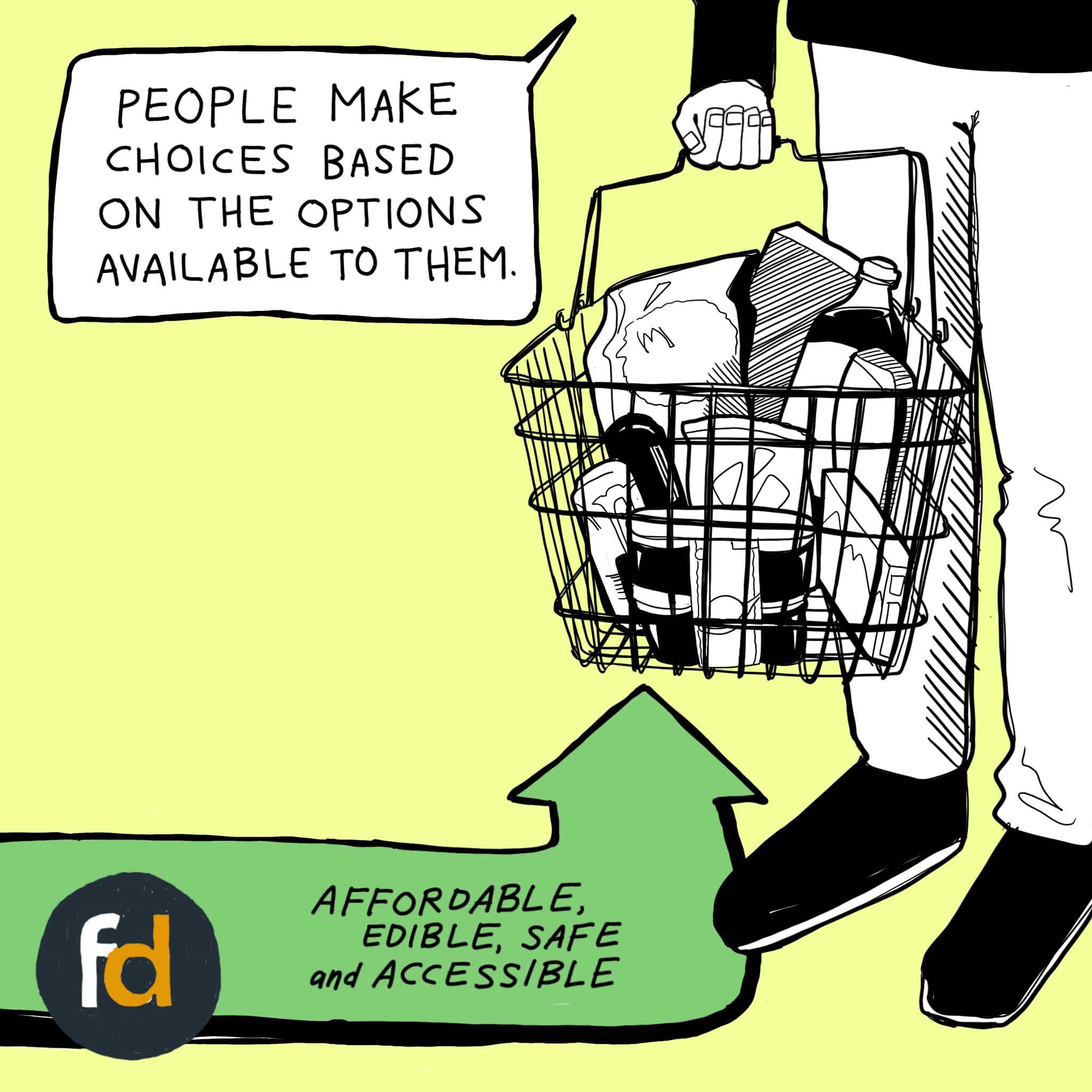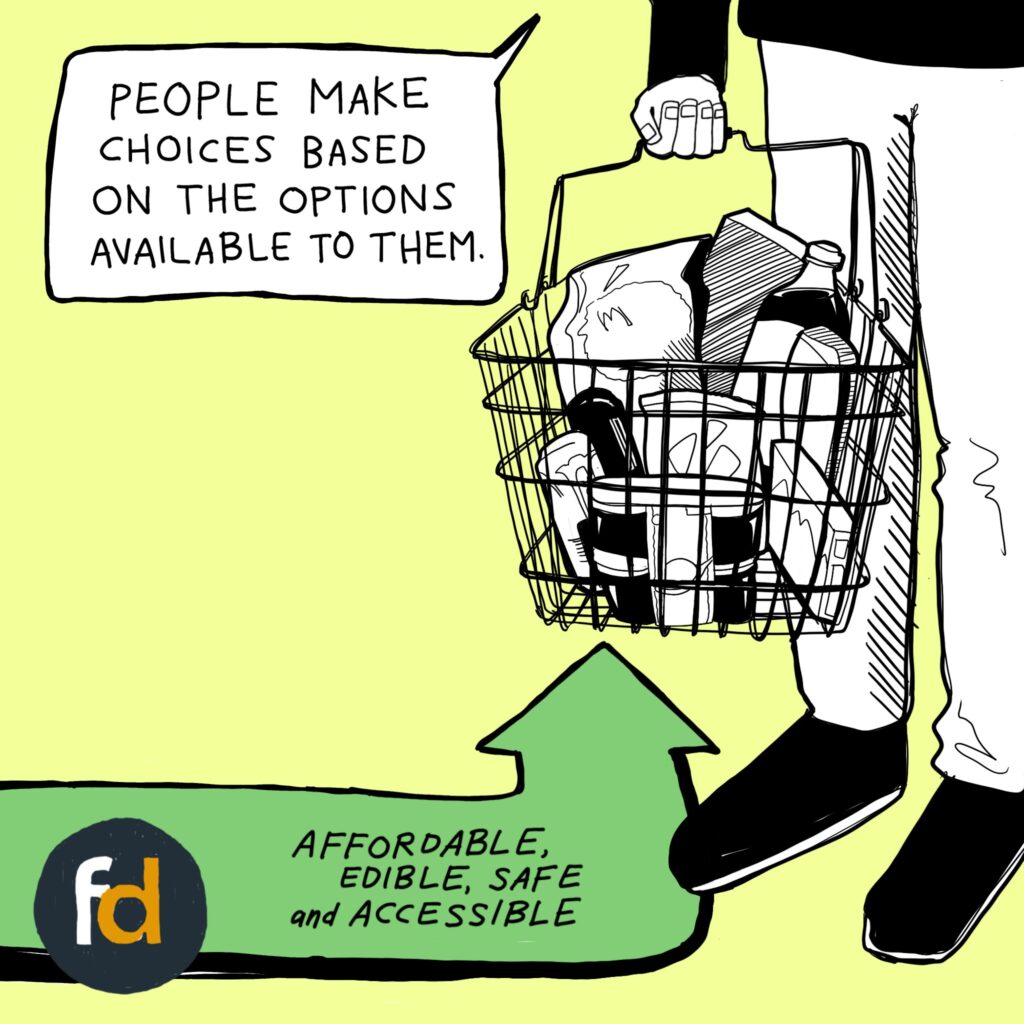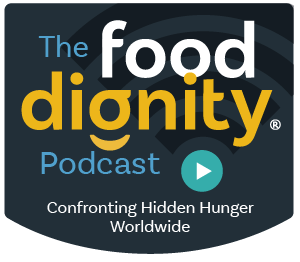Lesson 20: People Don’t Like Fruits and Vegetables

About This Blog:
The blog below is an edited transcript of the “Candid Clancy” podcast Episode 137.
About the Editor:
The below podcast has been edited for the page by Amanda Gipson, a creative writer and community-based agricultural educator. You can find out more about Amanda’s work here.
About the Illustrator:
The beautiful images below were created by Rebecca Garofano, our Food Dignity Institute Lead and Illustration Specialist. You can find more of her work at @VeggieDoodleSoup on Instagram and at her website.
When The Food Dignity Movement does up a popup stand, we’re greeted with such enthusiasm that people have compared us to ice cream trucks. The comparison is understandable. Children run from their homes and crowd around us with shopping bags. I’ve seen people cry because they can finally follow their doctor’s advice.
Yet not so long ago I met a man at a conference in Chicago who asserted that people experiencing food insecurity don’t want to “eat healthy.” Although my heart sank when I heard this in a room full of changemakers gathered to influence food policy, I understand why he said it, and what shaped his viewpoint: research.
Research says that people in food insecurity don’t eat fruits and vegetables to the degree that those who are food secure do. It’s critical, however, that we understand the why behind the data. Data without context is meaningless.
Just because someone does not eat fruits and vegetables does not mean that they do not want to eat fruits and vegetables. It simply means that they do not eat them. The why, based on my professional experience, is much more complex. The assertion that, if they wanted to “eat healthy” they would, is based in privilege that many people experiencing hunger and food insecurity cannot claim.
People make choices based on the options at hand. Not everyone is dealt the same hand. Factors play into the options available. Some of these factors include: hunger, access to grocery stores, the quality of food in grocery stores. Many people aren’t aware that some grocery stores find it a challenge to stock fresh fruits and vegetables and that not all grocery stores are created equal. My experiences with rural grocery stores have caused me to leave fresh fruits and vegetables behind more than once out of concern for quality and cost.
I was at this conference in Chicago as one of the only people there who has boots on the ground regarding food insecurity, having served three million meals since the start of the pandemic. We were gathered to discuss nutrition, agriculture, and food insecurity, and I was in the position to bring to these policy makers, academics, influencers, and other leaders my work with New Roots.
New Roots is an organization working with people in recovery from substance use disorders. They provide peer support services. They also serve people experiencing homelessness. The day prior to my arrival in Chicago, I’d sat down with people from New Roots, and everyone in that focus group insisted that all they wanted was fresh fruits and vegetables.
For the first time, I was able to speak up in Chicago and tell them about the people I met at New Roots and the amazing and transformational work going on there. It was an honor to have a seat at the table and be able to share that people do want to “eat healthy” even and especially when they can’t do so.
There’s little way, however, to understand the why behind the research outcomes unless we have boots on the ground. People don’t know what they don’t know. I’ve learned over the course of a decade of doing this work and through thousands of interviews that everyone simply wants to do the best they can with what they have, much the same as anyone else. That’s why it is so important to approach solutions with empathy, dignity, and respect. We must ground ourselves in asking appropriate questions and start with compassionate curiosity.

If you’ve thought about the ways in which your food pantry can address misconceptions about fruit and vegetable consumption from a place of compassionate curiosity, I want to hear from you. How have you experienced bridging the gap between research and solutions? Email me with your thoughts–anonymously or otherwise—at clancy@clancyharrison.com with the episode title in the subject line.
Leave a Comment

Welcome to the Food Dignity® blog, where each article exposes the truth about hidden hunger and food insecurity.
Want to learn more about how we might work together?
Fight hidden hunger by becoming a
Food Dignity® Champion and take the HIDDEN HUNGER PLEDGE >




